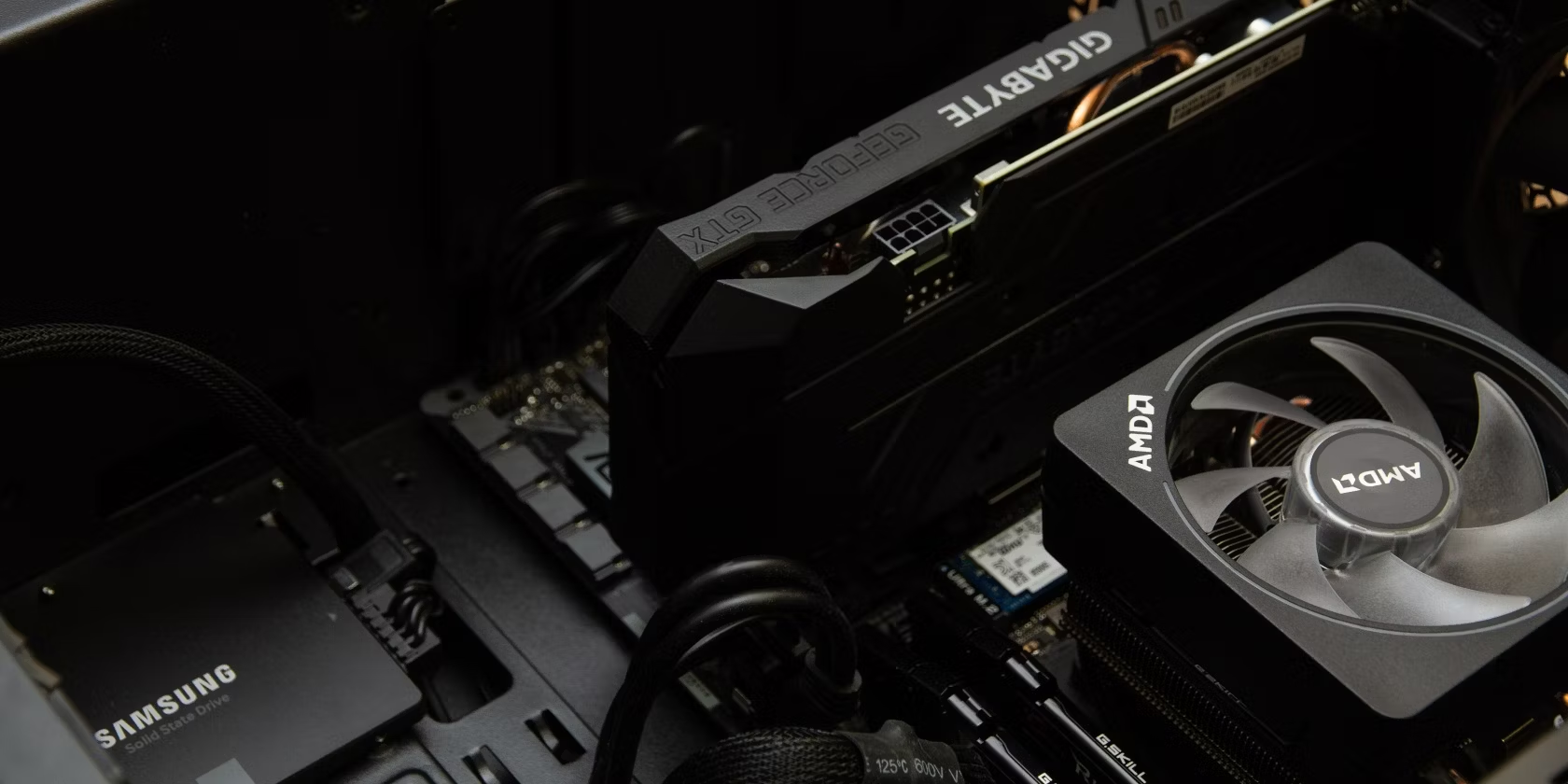10 Best Tools To Stress Test Your GPU on Windows

Ever wondered if your computer's graphics card is up to the task? GPU stress testing is the key to finding out. Whether you're a gamer pushing for higher frame rates or a professional handling demanding visual tasks, knowing your GPU's limits is crucial.
This guide will walk you through the top 10 tools for stress testing your GPU on Windows. We'll cover what these tests do, why they matter, and how to use them effectively. Let's dive in and unlock your GPU's full potential!
Why Perform a GPU Stress Test?
Before we dive into the tools, it's crucial to understand the reasons behind GPU stress testing:
- Overclocking Validation: If you've overclocked your GPU, a stress test can confirm that it remains stable under load.
- Identifying Hardware Issues: Stress tests can reveal problems with your GPU that might not be apparent during normal use.
- Testing Cooling Efficiency: These tests push your GPU to its thermal limits, helping you evaluate your cooling solution's effectiveness.
- Performance Benchmarking: Many stress test tools also serve as benchmarks, allowing you to compare your GPU's performance against others.
- Burn-In Testing: For new GPUs, a stress test can help ensure there are no manufacturing defects.
Top 10 GPU Stress Test Software
Let's explore the best tools available for how to stress test GPU components on Windows:
1. FurMark
Often referred to as the "GPU burner," FurMark is one of the most intense GPU stress test software options available.
- Features:
- Extreme stability testing
- Real-time temperature and fan speed monitoring
- Benchmarking mode
- Support for multiple GPUs
- Pros:
- Very intense stress test
- Simple interface
- Free to use
- Cons:
- Can be too stressful for some GPUs
- Limited customization options
2. 3DMark
3DMark is an industry-standard benchmarking tool that also serves as an excellent GPU stress test.
- Features:
- Multiple test scenarios for different use cases
- Detailed performance analysis
- Comparison with other systems
- VR performance testing
- Pros:
- Comprehensive testing suite
- Regular updates with new tests
- Widely recognized benchmark scores
- Cons:
- Full version can be expensive
- Some tests may be overkill for casual users
3. Heaven UNIGINE
Heaven UNIGINE offers a beautiful 3D environment for testing your GPU's capabilities.
- Features:
- Stunning visuals for a more engaging test
- Customizable settings
- Support for DirectX and OpenGL
- Benchmarking mode
- Pros:
- Visually appealing test environment
- Good for testing stability of overclocks
- Free basic version available
- Cons:
- May not stress newest GPUs to their limits
- Advanced features require paid version
4. MSI Kombustor
Based on the FurMark engine, MSI Kombustor offers both GPU and CPU stress test options.
- Features:
- Multiple stress test options
- Real-time temperature and clock speed monitoring
- Artifact scanning
- Built-in benchmarking
- Pros:
- User-friendly interface
- Combines GPU and CPU testing
- Free to use
- Cons:
- May not stress high-end GPUs sufficiently
- Limited customization for advanced users
5. OCCT
OCCT is a comprehensive hardware testing suite that includes powerful GPU stress test capabilities.
- Features:
- Multiple testing modes (including GPU, CPU, and PSU)
- Detailed error reporting
- Customizable test durations
- Temperature and power consumption monitoring
- Pros:
- All-in-one hardware testing solution
- Highly customizable tests
- Thorough error detection
- Cons:
- Interface can be overwhelming for beginners
- Full version requires payment
6. PassMark PerformanceTest
PassMark PerformanceTest offers a suite of benchmarks, including a dedicated GPU stability test.
- Features:
- 2D and 3D graphics tests
- Comparative benchmarking
- Detailed reporting
- CPU and memory testing alongside GPU
- Pros:
- Comprehensive system testing
- Easy to understand results
- Regular updates
- Cons:
- Full version is paid
- Some tests may not stress modern GPUs fully
7. AIDA64 Extreme
While primarily known for system information and diagnostics, AIDA64 Extreme also offers robust stress test GPU capabilities.
- Features:
- System stability test including GPU
- Detailed hardware information
- Customizable stress test options
- Temperature and power monitoring
- Pros:
- Comprehensive system diagnostics alongside stress testing
- Highly detailed hardware information
- Customizable test scenarios
- Cons:
- Paid software
- Interface can be complex for casual users
8. GPU-Z
While not a stress test tool itself, GPU-Z is invaluable for monitoring your GPU during stress tests.
- Features:
- Detailed GPU information
- Real-time sensor readings
- Logging capabilities
- Validation of GPU specifications
- Pros:
- Free to use
- Lightweight and easy to use alongside other stress test tools
- Provides in-depth GPU information
- Cons:
- Not a stress test tool on its own
- Limited functionality beyond GPU monitoring
9. Novabench
Novabench offers a quick and easy way to benchmark your entire system, including a GPU stress test.
- Features:
- Full system benchmark including GPU, CPU, RAM, and storage
- Online result comparison
- Lightweight and quick to run
- Pros:
- Fast and easy to use
- Free version available
- Tests whole system performance
- Cons:
- Not as comprehensive as dedicated GPU stress tools
- Limited customization options
10. UserBenchmark
UserBenchmark provides a quick and easy way to test and compare your GPU performance against other users.
- Features:
- Full system benchmark including GPU
- Comparison against other users' results
- Quick and easy to run
- Pros:
- Free to use
- Provides context for your GPU's performance
- Tests whole system performance
- Cons:
- Not a dedicated stress test tool
- Controversy over testing methodology
How to Stress Test GPU
Now that we've covered the tools, let's look at the general process for conducting a GPU stress test:
- Prepare Your System:
- Close unnecessary background applications
- Ensure your GPU drivers are up-to-date
- Monitor your system's temperature before starting
- Choose Your Tool:
- Select a tool from the list above based on your needs
- For a thorough test, consider using multiple tools
- Run the Test:
- Start with stock GPU settings
- Run the stress test for at least 15-30 minutes
- Monitor temperatures and performance throughout the test
- Analyze Results:
- Check for any artifacts or graphical glitches
- Ensure temperatures remain within safe limits
- Look for any system crashes or instability
- Repeat if Necessary:
- If you're testing an overclock, adjust settings and retest as needed
Best Practices for GPU Stress Testing
To get the most out of your GPU stress test, follow these best practices:
- Ensure Proper Cooling: Make sure your system has adequate cooling before starting any stress tests.
- Start with Stock Settings: Always test your GPU at stock settings first before moving on to overclocks.
- Monitor Temperatures: Keep a close eye on GPU temperatures throughout the test.
- Use Multiple Tools: Different tools stress your GPU in different ways, so using multiple tools provides more comprehensive testing.
- Be Patient: Proper stress testing takes time. Don't rush the process.
- Safety First: If temperatures get too high or you notice any concerning behavior, stop the test immediately.
Conclusion
Regularly performing a GPU stability test is crucial for maintaining your system's performance and longevity. The tools mentioned in this article provide a range of options for how to stress test GPU components effectively. Whether you're a gamer pushing for maximum framerates, a content creator requiring stable performance, or just a general user wanting to ensure system health, these GPU stress test software options will help you keep your graphics card running at its best.
Remember, while stress testing is important, it's equally crucial to use these tools responsibly. Always prioritize the safety of your hardware and follow best practices when pushing your GPU to its limits. With the right approach and tools, you can ensure your GPU remains stable, performant, and ready for whatever tasks you throw at it.
FAQs
Q1. How often should I run a GPU stress test?
It's recommended to run a GPU stress test after major hardware changes, overclocking, or if you suspect performance issues. For regular maintenance, every 3-6 months is sufficient.
Q2. Can a GPU stress test damage my graphics card?
When done correctly, a GPU stability test shouldn't damage your card. However, if your GPU has pre-existing issues or inadequate cooling, prolonged stress could exacerbate problems.
Q3. What's the difference between a GPU and a CPU stress test?
A GPU stress test focuses on graphics processing capabilities, while a CPU stress test targets the central processor. Both are important for overall system stability.
